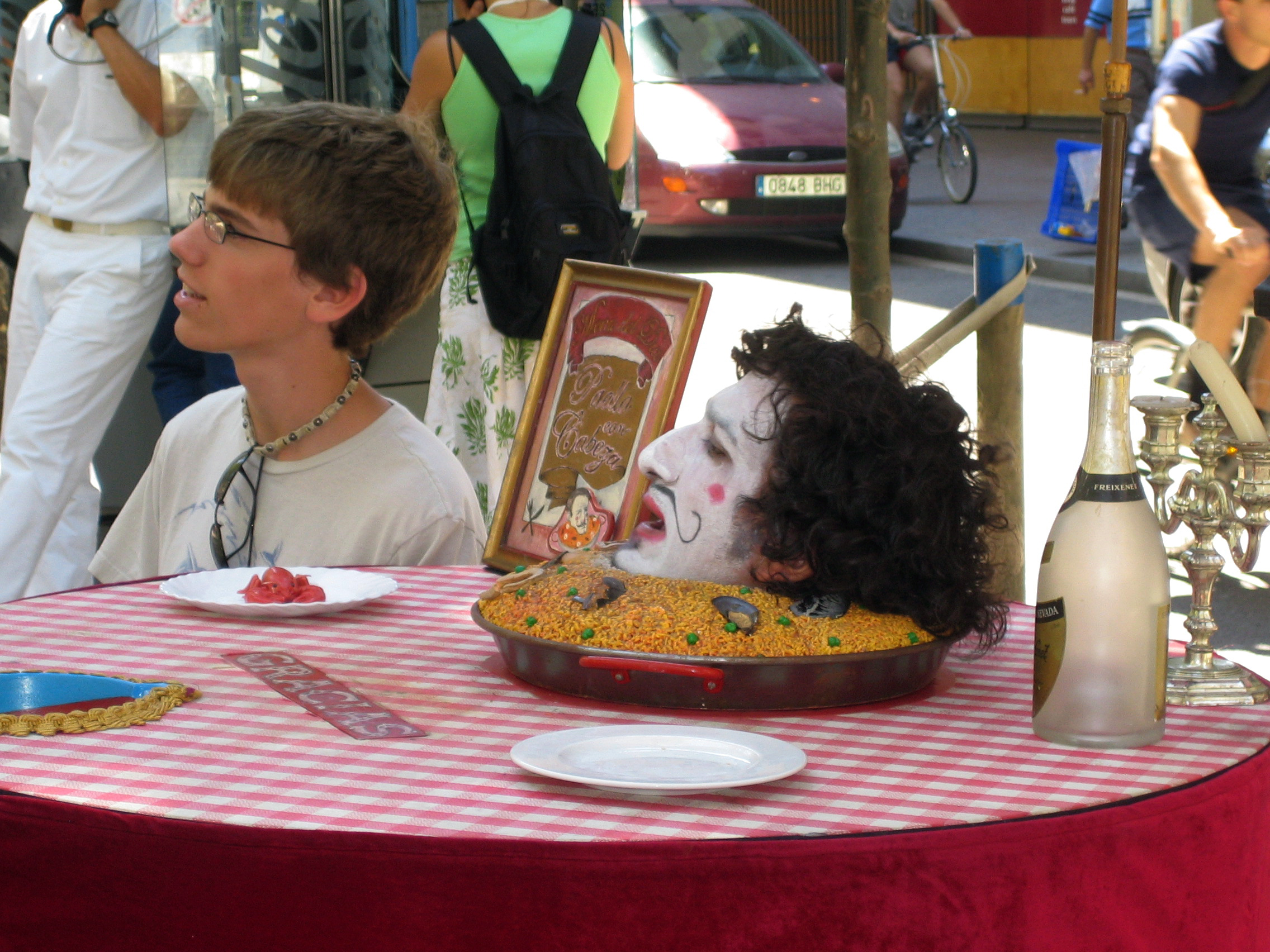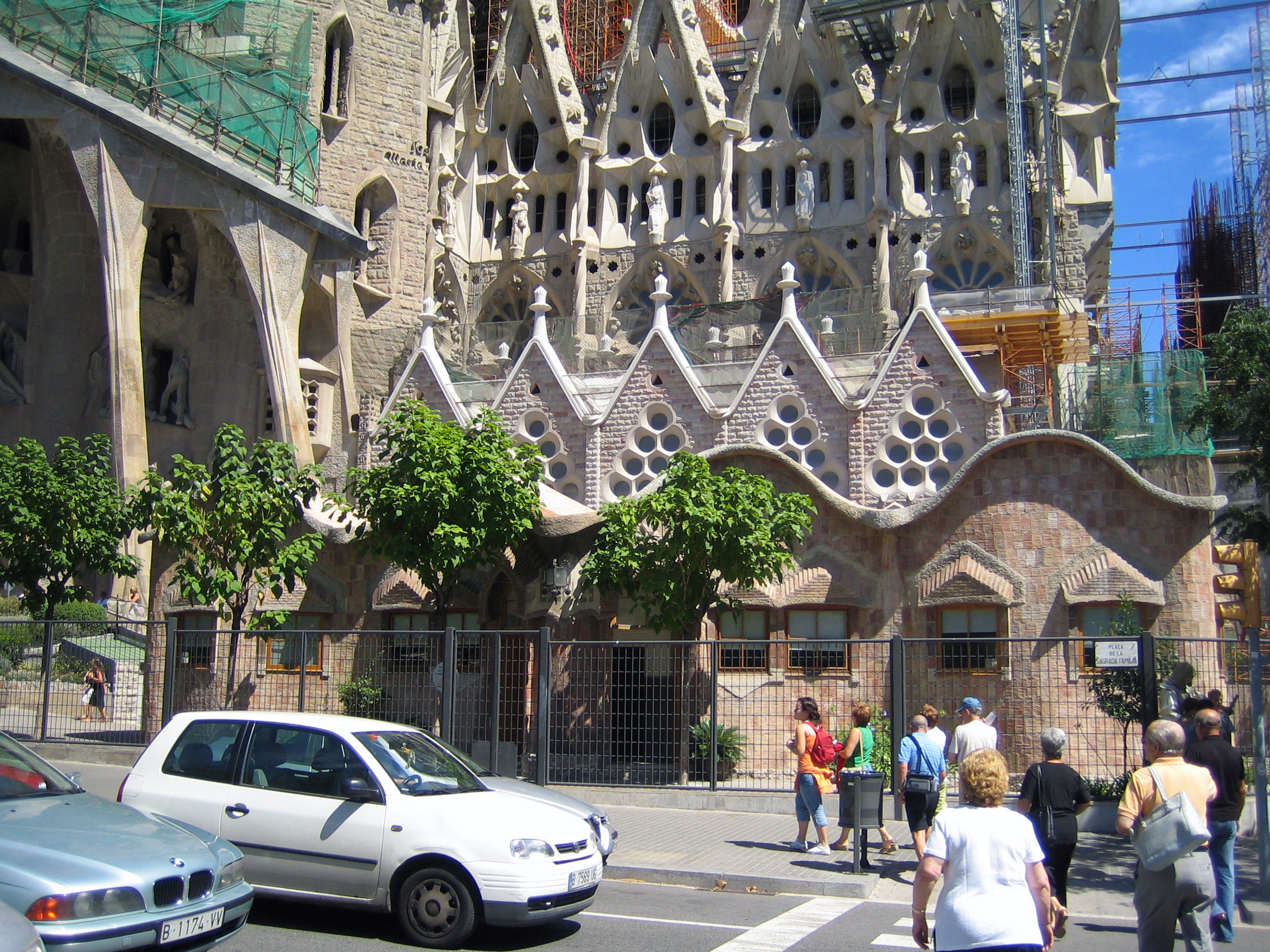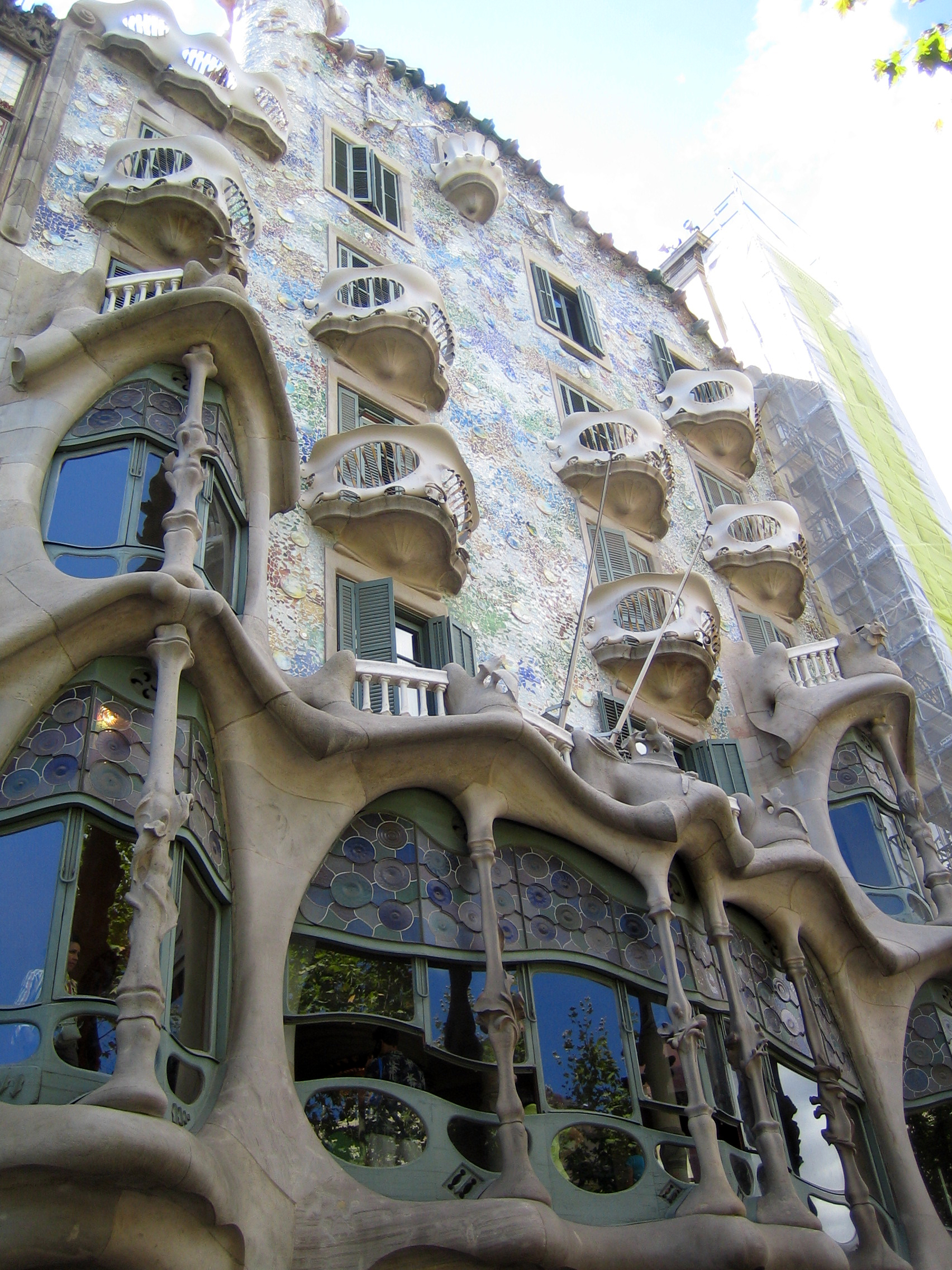 It’s a short 1.5 hour drive to Barcelona from Costa Brava. Our car rental agreement had us dropping the car off at the Estacio-Sants (train station) by 1:30pm. No problem finding the train station, but finding the ATESA car rental return always seemed to take a really long time. Still, we parked the car in the proper place by 1:15pm. Guess what? No-one there. After a few calls, we learned that all we had to do was leave the car in the parking garage and give the key to the garage attendant. The ATESA office was closed during the 3 hour lunch break but they’d return at 4pm and pick up the papers. Ah yes, the 3 hour siesta. How civilized.
It’s a short 1.5 hour drive to Barcelona from Costa Brava. Our car rental agreement had us dropping the car off at the Estacio-Sants (train station) by 1:30pm. No problem finding the train station, but finding the ATESA car rental return always seemed to take a really long time. Still, we parked the car in the proper place by 1:15pm. Guess what? No-one there. After a few calls, we learned that all we had to do was leave the car in the parking garage and give the key to the garage attendant. The ATESA office was closed during the 3 hour lunch break but they’d return at 4pm and pick up the papers. Ah yes, the 3 hour siesta. How civilized.
In previous visits we booked hotel rooms near the Ramblas, one of the world’s best streets for people watching and street entertainment and a 15 walk from the Plaza Catyluna to the statue of Columbus pointing east across the Mediterranean to his birthplace in Genoa, that is if you don’t stop and look at all the entertainment on the way down.
The promenade of the Ramblas is in the center of the street, but there are so many people crammed into this quarter, day and night, it usually spills into the car lanes. Aside from looking at all walks of life from around the world, the local street artists are lots of fun. We’ve all seen the usually annoying grease painted living statues dotting historic street corners all over the world, but in Barcelona they’re more interactive, they’ve got better costumes, and they’re just a lot more fun. There was the invisible man sitting on his black throne, enticing beautiful young women to sit on his lap. A little further down the Ramblas was a small plate sitting on top of a big black box Put a coin into the plate and a devil will pop out of the box and scare the hell out you. How about getting your photo taken with a really good Che Guevara look-alike. There was a Marilyn Monroe who looked more like Gloria Swanson, a very funny Charlie Chaplin, and a human (British) head in a bowl of paella pattering funny insults at people who wouldn’t throw a coin onto his table.
At night the ramblas attracts an older crowd. This party goes on all night long. After around 10pm, the beer hawkers hit the street. These guys are amazing. They’ll go into a grocery store, buy a six-pack and then walk down the ramblas and sell individual cans to anyone. We saw lots of them, waving their six-packs and shouting the Spanish version of “beer here” as if they were at a sporting event. Actually, walking the Ramblas is a lot like a sporting event.
Adjacent to the Ramblas is the Barrio Gothic, the old medieval quarter, a mixture of Roman ruins, 14tth and 15th century squares, early 19th century modernista and occasionally an architectural nightmare from the 1960’s. Although the residents of the old quarter probably tried to keep the 1960’s and 1970’s architectural barbarians out, the old city walls came down years ago and they lost the fight against the city planners. By the time they realized what they’d done to this beautiful of quarter, the damage had been done and people just learned to live with it. If you squint your eyes enough, it does kind of disappear. In time, the city finally realized what a gem that had in the Barrio Gothic and designated it ah historical landmark which included giving it “Pedestrian zone only” status; a no car zone.
Wandering through the Barrio Gothic is like wandering through any old medieval city; every turn, a different treasure, an interesting shop window, a talented street musician playing under the porticos, a great coffee shop or a refreshing gelato stand. Hours go by very quickly.
 In this visit to Barcelona we decided to stay along the Passeig de Gracia, the wide boulevard filled with cafes, tapas bars and modernista architecture.
In this visit to Barcelona we decided to stay along the Passeig de Gracia, the wide boulevard filled with cafes, tapas bars and modernista architecture.
Our first stop was to see the progress at the Sagrada Familia. Originally designated as a Roman Catholic Basilica, Antoni Gaudi began work on it in 1884 and by 1911, he gave up all other projects and devoted his work only to the church. In his spare time, he set up a school directly outside the church where he taught children the concepts of geometry. In his last years, he’d become more or less a recluse and in June 1926 he was run over by a tram. He was delivered to a public hospital and treated as an indigent. No-one recognized him; no identification and no money in his pockets, old worn clothing. He lasted three days and then died.
Gaudi’s death didn’t stop the work on the church. His students and other architects kept the dream alive until, during the Spanish Civil War, Gaudi’s workshop was burned down and what few architectural plans that existed went up in smoke. Few is the key word because the old master didn’t really draw many plans. He pretty much directed everything as it was being built on site. From about 1940, the task of completing the church has fallen into the hands of a lot of different people. With the advent of computer technology, things started to move at a quicker pace. Our first visit to the Sagrada Familia was in 1994. Granted the work is still moving at a slow pace, but it’s remarkable.
The church is supposed to be finished in 2026, just about the time, they’ll have to start restoring the original towers that were built in 1900. I guess it’s not such a long time in church building years. Some old churches took over 400 years to build.
 For us though, the masterpiece of Gaudi’s work in Barcelona is the Casa Batllo on the Passeig de Gracia. This underwater fantasy looks like the interior of Captain Nemo’s Nautilus. Actually, Gaudi and Jules Verne were contemporaries and given the fact that Jules Vern was one of the most translated authors of his time, I wouldn’t be surprised if he was an influence on Gaudi’s work.
For us though, the masterpiece of Gaudi’s work in Barcelona is the Casa Batllo on the Passeig de Gracia. This underwater fantasy looks like the interior of Captain Nemo’s Nautilus. Actually, Gaudi and Jules Verne were contemporaries and given the fact that Jules Vern was one of the most translated authors of his time, I wouldn’t be surprised if he was an influence on Gaudi’s work.
Casa Battlo is situated in a block right next to a house by Joseph Puig I Cadafalch and a few door down from a house by Louis Domenech I Montaner. You get the big three in one block.
By the way, here’s an interesting note. There is a rumor that Gaudi was color blind and depended on his assistant Joseph Maria Jujol to choose the color scheme. This is an amazing rumor since the basis of Gaudi work is in the bright beautiful colors.
The English definition of the word “Gaudy” is tasteless, conspicuously ornate, tacky, cheap, garish and lots of other synonyms. Supposedly it has its roots in middle English. It’s kind of ironic that during Antoni Gaudi’s life, these were the adjectives used to describe his work. His buildings were all given sarcastic nicknames like “The House of Bones” for Casa Battlo and “The Quarry” for his apartment house, Casa Mila. Like a lot of new thinking artists, it took a long time for people to appreciate their genius.
We bought a walking guide to the modernista buildings and strolled along the grand avenues of the Eixample zone. These are grand avenues filled with great shopping, large cafes, tapas bars and of course, some of the most inspirational architecture we’ve ever seen. Barcelona’s Moderista art and architecture emerged in the early 20th century, around the same time Art Deco and Art Nouveau was hitting other parts of the world. The walking tour book gave us addresses and descriptions. It was like a treasure hunt. We lucked out on a few of them when the guardienne saw us peeking through the door glass and opened up the front door so we could enter and look around.
The main contributors to the modernista architecture school were Louis Domenich I Montaner, Joseph Puig I Cadafalch, Joseph Maria Jujol and Antoni Gaudi. Gaudi is the most famous but the others are just as wonderful. Just think of it, Picasso, Dali, Miro, the Modernistas, Pablo Casals all together in the same city at the same time.
If you are interested in staying in a totally restored grand Hotel designed by Louis Domenich I Montaner, check out the Casa Fuster. This is an amazing 5star hotel that just opened in 2005. All of the common rooms, restaurants and bars and exteriors have been restored to the original Montaner design. The rooms are very contemporary, ultra-comfortable and unfortunately really expensive. But if you search the web, you can probably find a good price. Even if you don’t stay there, it’s worth the visit just to look.
You must be logged in to post a comment.